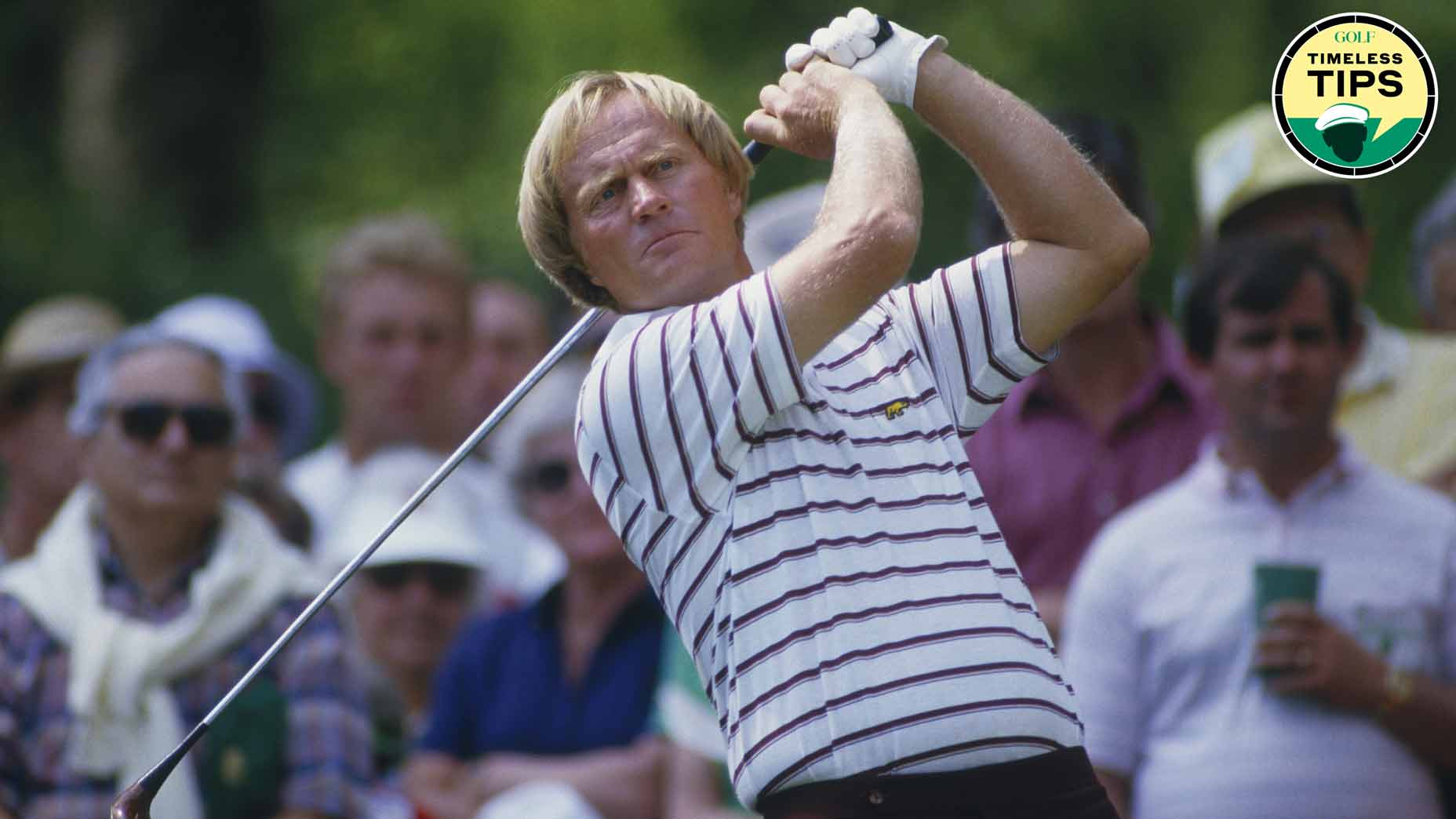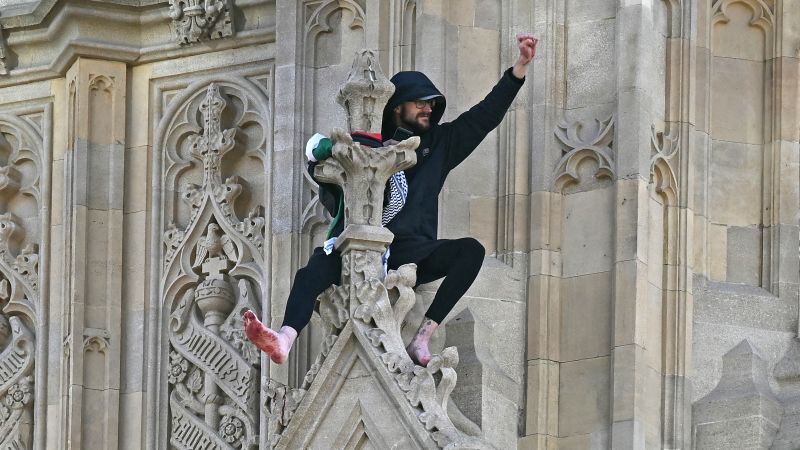Jack Nicklaus had a ‘mystery’ power move. Here’s how it worked

Jack Nicklaus’ swing didn’t look the most conventional, but it always worked.
Getty Images
Golf instruction is ever-evolving, but the best advice stands the test of time. In GOLF.com’s new series, Timeless Tips, we’re highlighting some of the greatest advice teachers and players have dispensed in the pages of GOLF Magazine. Today we look at a swing analysis of Jack Nicklaus from our January 1986 issue. For unlimited access to the full GOLF Magazine digital archive, join InsideGOLF today; you’ll enjoy $140 of value for only $39.99/year.
Jack Nicklaus is the greatest major champion in golf history. With 18 titles – plus another 19(!) runner-up finishes — no one was in the mix on Sunday afternoon more than the Golden Bear.
To achieve that level of consistency, you’ve got to have one heck of a golf swing — and Nicklaus had just that. But while his move was effective, it had a few quirks that were, well, Nicklaus-esque.
In today’s edition of Timeless Tips, we turn back the clock to 1986 when veteran teaching pro Johnny Myers penned a breakdown of Nicklaus’ “mystery” swing move for GOLF Magazine. You can check it out below.
Jack’s “mystery” power move
Jack Nicklaus is the most successful golfer of all time. The Golden Bear owns virtually every important record, from major championship victories to all-time money winnings. He remains the game’s preeminent superstar.
Since rising to prominence, Nicklaus has been analyzed by every expert and from every angle. Yet all these critics — and even Nicklaus himself — have missed a subtle move that is crucial to the consistency of his shotmaking. Very simply, he changes the position of his left foot during the swing to create leverage and power.
Nicklaus has stated that he turns his left toe out at address to get a freer turn of the hips through impact. And as you’ll see on the following pages, he does start with his left toe pointed out sharply. But after raising his left heel at the top of the backswing, Jack returns it to a different spot so that on the downswing his left foot is almost perpendicular to the target line. This new position creates a solid left side to hit against while eliminating any spinning that could result in cutting across the ball.
Let’s look at Jack’s “mystery move” below.

GOLF Magazine
In the first photograph, Nicklaus at address, his left foot is angled at least 30 degrees left of perpendicular to the target line. His right foot is much closer to perpendicular, angled out only about 10 degrees to the right.
From this setup, Nicklaus is well-positioned to make a full yet contained ‘backswing turn. The nearly squared right toe keeps him from swaying to the right which would lead to mishits and loss of accuracy. Jack could make an even bigger turn if he set his left foot perpendicular to the target line, but he probably wouldn’t be able to contain his backswing coil as well.
Look at photograph 2, showing Nicklaus at the top of the backswing. His left ankle has turned inward and what little weight he has on his left foot is on the inside of the big toe. Jack’s enormous backswing windup has pulled the left heel well off the ground — a key feature of the Nicklaus swing. Despite all this movement, however, the angle of his left foot in relation to the target line has remained relatively constant — it is still turned out about 30 degrees
The position of Nicklaus’ right leg has also remained constant through the backswing. Almost all his weight has shifted onto the inside of the right foot, but notice that he hasn’t swayed even an inch to the right. Also notice that if Jack’s right foot were angled out more sharply at address, he’d have trouble keeping his right side so solid. At this point, his left foot isn’t set up to give a similar bracing effect on the left side. For that, Nicklaus has to move the left heel — which he does starting in the next photograph.

GOLF Magazine
As Nicklaus starts down, in photograph 3, he slides his knees laterally and replaces his left heel in the new position, slightly closer to the target. Now the left foot is nearly perpendicular to the target line.
It’s a small movement but it gives big results. By replacing his heel closer to the target, Jack is making a slight diagonal shift of his hips (along with his knees and shoulders) so they’re more closed to the target than at address. It also allows his arms to drop straight down, which returns the right elbow to his side. Consequently, Nicklaus swings down a little inside his backswing plane, while his wrists remain cocked.
So far, Jack’s key “pieces” are working together. His knees are moving laterally and his hips haven’t spun left at all. The shoulders are unwinding, but they, too, still point right of target. At this point, Jack is a captive of his “mystery move” — he has to hit the ball with the club moving from inside to along the target line.
The final photograph shows Nicklaus approaching impact. The left foot now braces a firm left side. Jack’s tremendous lateral thrust of the legs and hips has just started to turn left of the target, allowing his hands to release the clubhead freely so it strikes the ball squarely before heading back inside the target line.
If you’re pulling or slicing, you may be “spinning” your hips to the left before impact, in which case you need to create a firm left side. Realigning during the swing is a lot to ask, so try setting up with your left foot set squarer to the target line. As Jack shows, the results can be dramatic.
Related
5 Things I Never Play Golf Without: David Dusek
Our 11-handicap equipment writer always brings his favorite divot repair tool, a portable speaker and some high-tech gear to the course.As long as the weather i
Donald Trump’s golf course wrecked by pro-Palestine protesters
Pro-Palestinian protesters have vandalized parts of U.S. President Donald Trump's golf course in Scotland in response to his proposal for the reconstruction of
Man holding Palestinian flag scales London’s Big Ben hours after…
CNN — Emergency services were called to London’s Palace of Westminster on Saturday a
EPD: Drunk driver parked car on golf course
EVANSVILLE, Ind. (WFIE) - Evansville police say they arrested a man after finding him drunk in his car that was parked on a golf course.Officers say they were c












